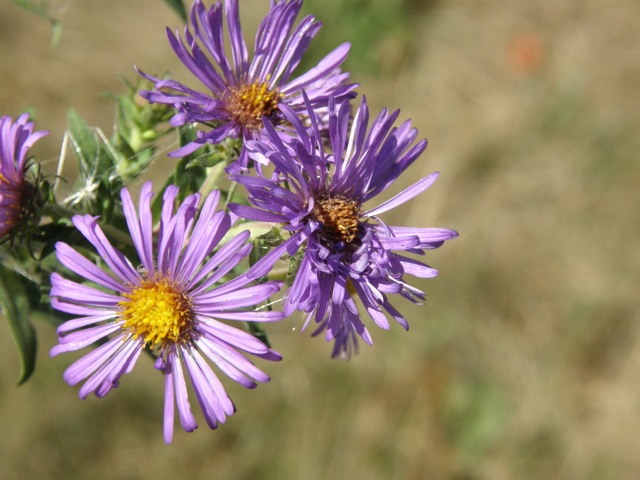[[Asteraceae]], the daisy, sunflower or composite family.
Description:
Plant:
Erect, hairy/downy plant with many side branches, 2'-6', stems sometimes
red-streaked. Many relatively small leaves with alternate to
near-opposite placement.
Flowers in small groups at end of branches.
Flowers:
40-100 purple to violet rays surround a relatively large yellow center
that turns brownish with age.
Heads 1"-1.5", typically grouped at the ends of branches.
Leaves:
Alternate, 1.5"-4",
tending towards opposite. Lanceolate to narrowly ovate, with smooth
margins, some clasping the stem.
Fruit:
Seeds on wide, downy umbrella.
Blooming:
August-October
Habitat:
Wet meadows, fields.
Comments:
One of the most attractive of the fall asters, some flowers remaining
even after the first hard frosts have killed other fall flowers.
Color can vary from purple to violet to near white.
This plant was formerly included in the genus Aster along with many
other North American "asters". Recent genetic work has resulted in
the reclassification of nearly all of the North american species into other
genera, leaving Aster as an old-world genus.
Where to find it:
In low open areas near the shoreline all around the pond.
